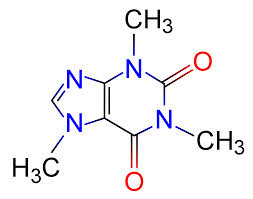19: Electron Transfer Reactions
- Page ID
- 60787
\( \newcommand{\vecs}[1]{\overset { \scriptstyle \rightharpoonup} {\mathbf{#1}} } \) \( \newcommand{\vecd}[1]{\overset{-\!-\!\rightharpoonup}{\vphantom{a}\smash {#1}}} \)\(\newcommand{\id}{\mathrm{id}}\) \( \newcommand{\Span}{\mathrm{span}}\) \( \newcommand{\kernel}{\mathrm{null}\,}\) \( \newcommand{\range}{\mathrm{range}\,}\) \( \newcommand{\RealPart}{\mathrm{Re}}\) \( \newcommand{\ImaginaryPart}{\mathrm{Im}}\) \( \newcommand{\Argument}{\mathrm{Arg}}\) \( \newcommand{\norm}[1]{\| #1 \|}\) \( \newcommand{\inner}[2]{\langle #1, #2 \rangle}\) \( \newcommand{\Span}{\mathrm{span}}\) \(\newcommand{\id}{\mathrm{id}}\) \( \newcommand{\Span}{\mathrm{span}}\) \( \newcommand{\kernel}{\mathrm{null}\,}\) \( \newcommand{\range}{\mathrm{range}\,}\) \( \newcommand{\RealPart}{\mathrm{Re}}\) \( \newcommand{\ImaginaryPart}{\mathrm{Im}}\) \( \newcommand{\Argument}{\mathrm{Arg}}\) \( \newcommand{\norm}[1]{\| #1 \|}\) \( \newcommand{\inner}[2]{\langle #1, #2 \rangle}\) \( \newcommand{\Span}{\mathrm{span}}\)\(\newcommand{\AA}{\unicode[.8,0]{x212B}}\)
 |
UALR 1403: General Chemistry II |
 |
| Unit I: Matter Unit II: Kinetics & Equilibria Unit III: Acid/Base Unit IV: Thermo & Electrochemistry | ||
- 19.1: Electrical Fundamentals
- In this chapter will introduce electrochemistry and be going over electrochemical cells, and so it seems prudent to introduce some of the fundamental concepts of electricity. This section does not have problem sets or activities, but will provide definitions you may want to refer back to as you are doing the other sections of this chapter. I am writing this section to help students who have not had physics and hope it will help make the other sections easier to understand.
- 19.2: Oxidation-Reduction Reactions
- Oxidation-Reduction (Redox) reactions are a basic type of chemical reaction involving the transfer of electrons from one atom or chemical entity to another, or more accurately, from one type of orbital to another, that results in new bonds being formed. The electron transfer may be between two different chemical species, or between atoms of the same species. This chapter introduces electrochemistry, which is the study of redox reactions.
- 19.3: Electrochemical Cells
- If a redox reaction can be split into half reactions it becomes possible to build a device, called an electrochemical cell, that has separate compartments (cells) for the oxidant and reductant, that physically prevents them from contacting each other and reacting, but allows for charge transfer in the form of electrons through an external circuit and in the form of counter ions in a salt bridge that connects the cells.
- 19.4: Electrochemical Cell Fundamentals
- In the previous section electrochemical cells were introduced, related to redox reactions that could be split into half reactions, and shown that a cell could be run in a galvanic (voltaic) or electrolytic mode. In this section we are going to apply some of the fundamentals of electricity that were introduced previously to the operations of electrochemical cells.
- 19.9: Electrolysis
- In this chapter, we have described various galvanic cells in which a spontaneous chemical reaction is used to generate electrical energy. In an electrolytic cell, however, the opposite process, called electrolysis, occurs: an external voltage is applied to drive a nonspontaneous reaction. In this section, we look at how electrolytic cells are constructed and explore some of their many commercial applications.


